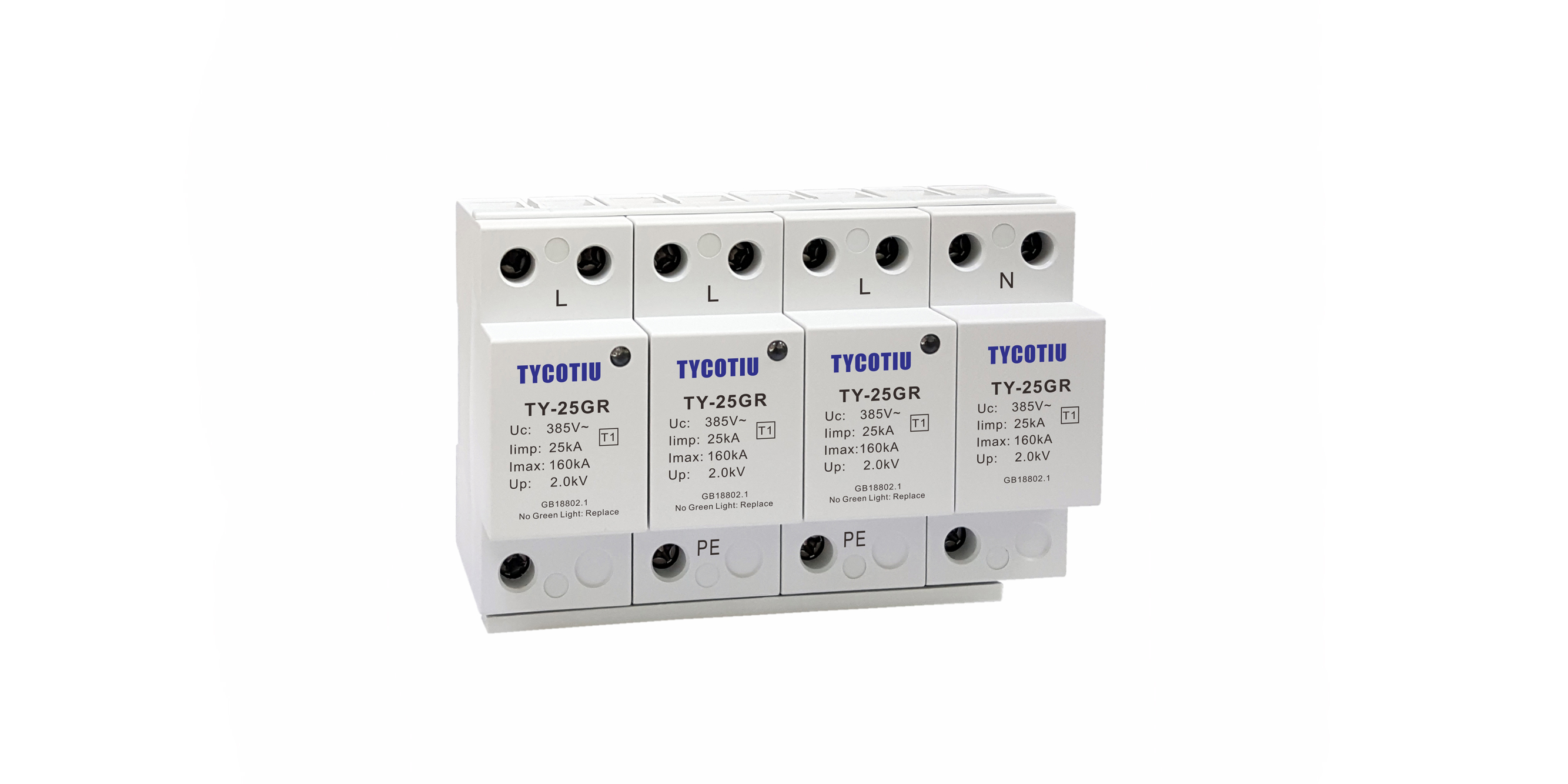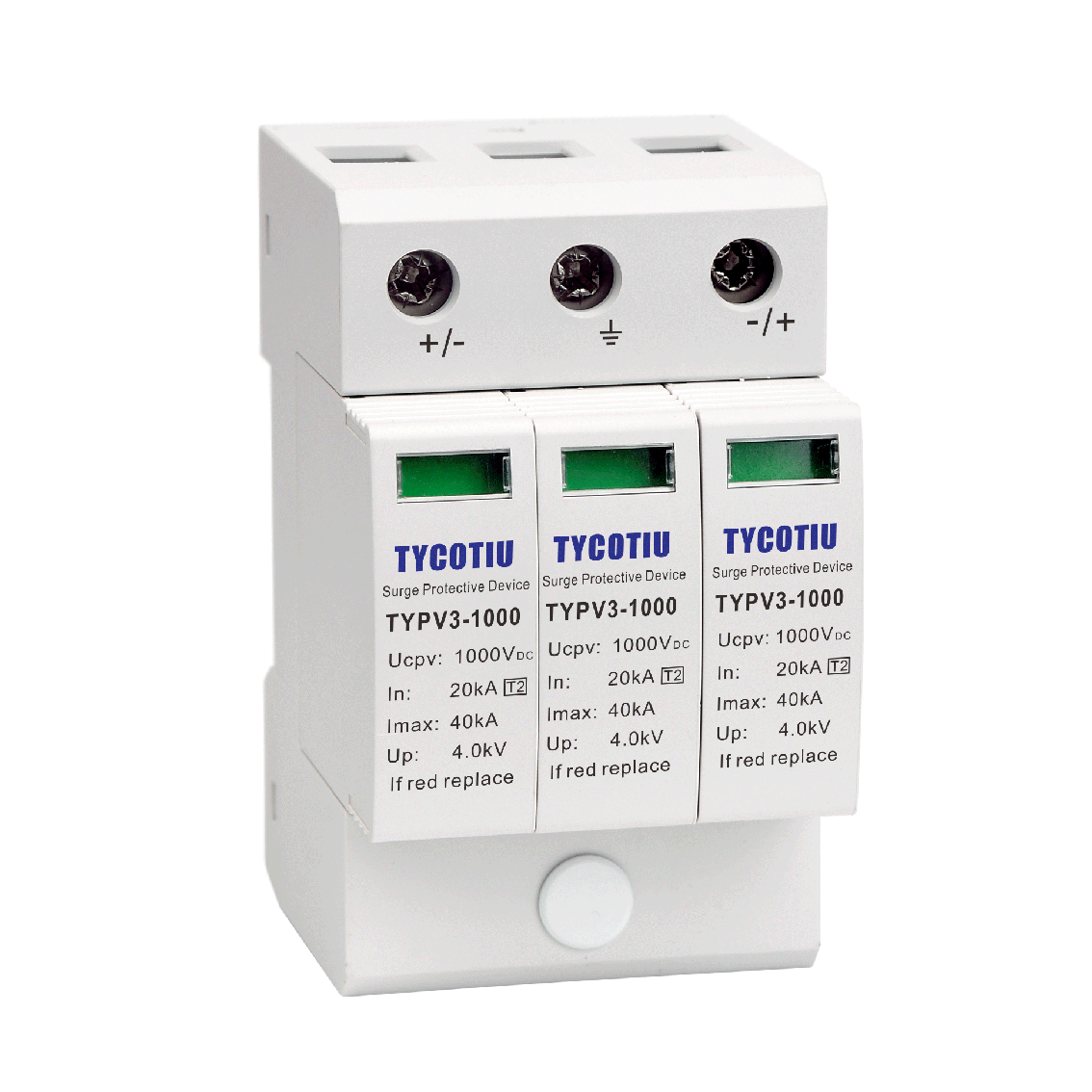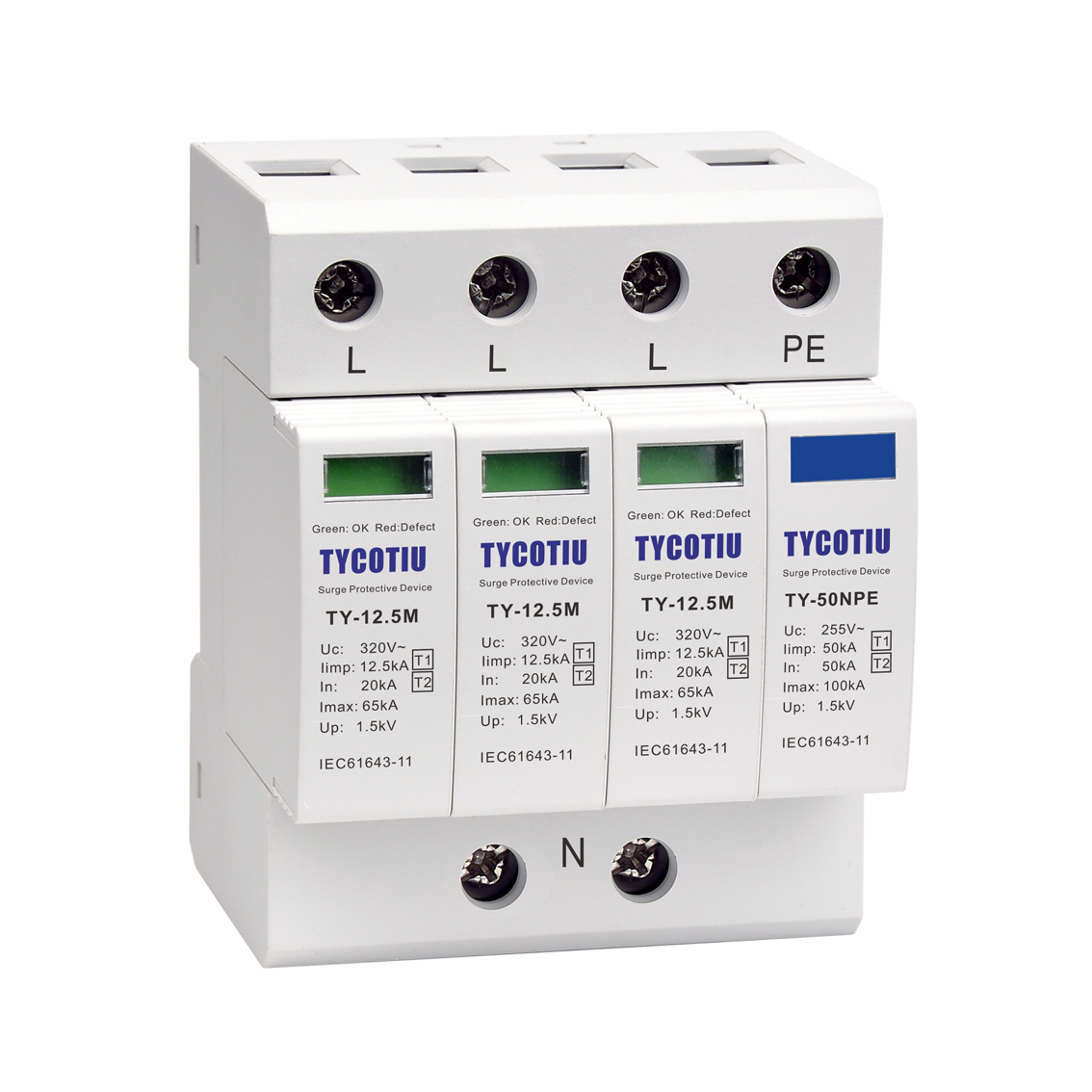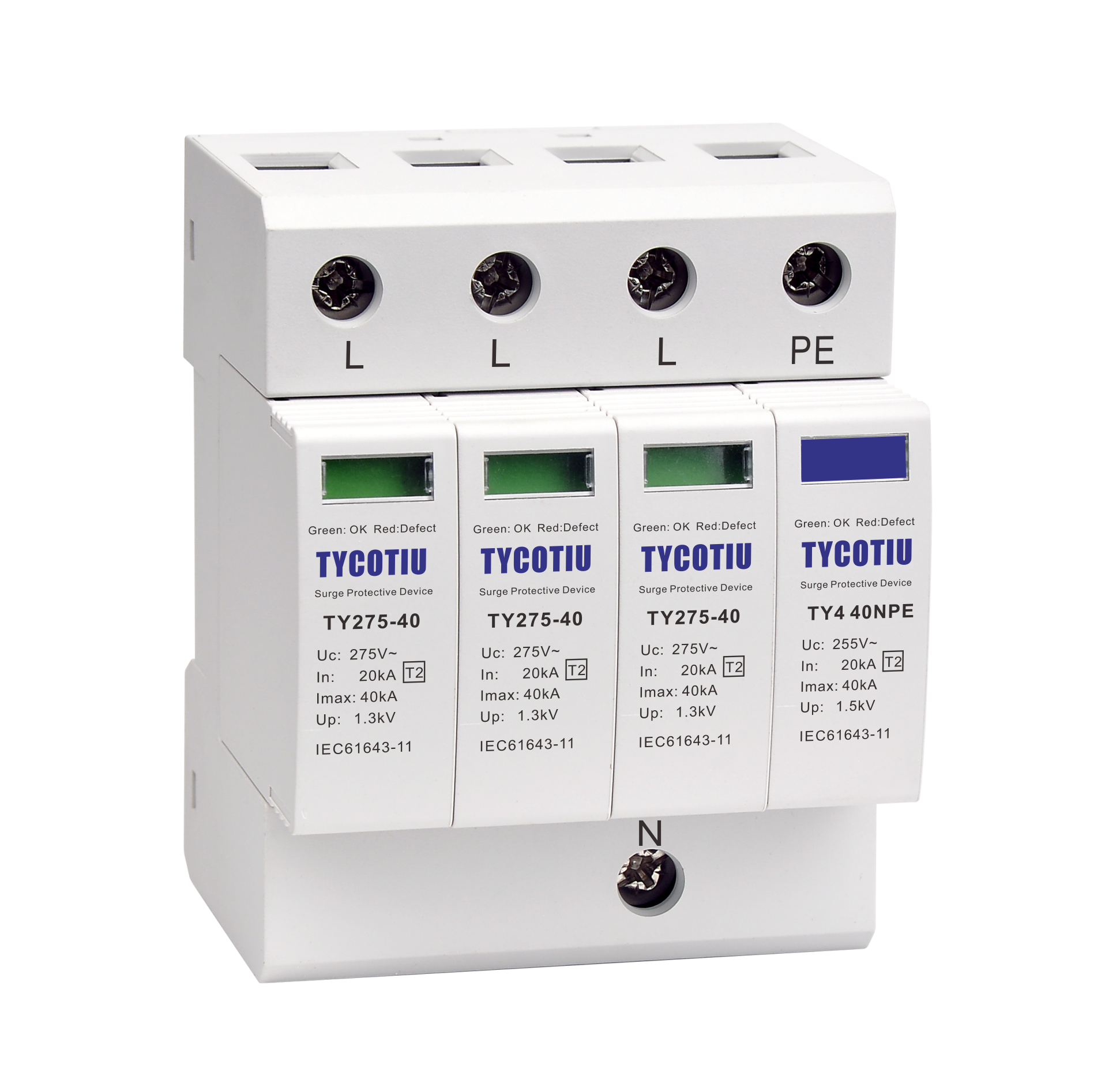In essence, the surge protector is a kind of equipotential connection material, its selection refers to in different lightning protection areas, according to the severity of different lightning electromagnetic pulse and equipotential connection point location, determine what kind of surge protector is used in the electronic equipment located in the area, to achieve equipotential connection with the common ground body.
1. Detailed explanation of surge protector parameters
(1) Rated operating voltage (Un) : The best voltage applicable to the surge protector electrical appliance when working for a long time. Ur should be matched with the operating voltage of the protected equipment to ensure that the surge protector is not damaged during normal operation.
(2) Maximum continuous operating voltage (Uc) : The maximum voltage that the surge protector can withstand under long-term working conditions. The Uc should be greater than the maximum working voltage of the protected device to ensure that the device is not damaged during normal operation.
(3) Rated load current (IL) : the current value that the surge protector can withstand under normal working condition. IL should match the operating current of the device being protected to ensure that the protector can withstand the current generated by the device.
(4) Maximum discharge current (Imax) : The maximum current value that the surge protector can withstand in a surge event. The larger the Imax, the better the surge protector's ability to withstand transient shocks.
(5) Response time (tA) : The time from the occurrence of overvoltage to the action of the surge protector. The shorter the response time, the faster the protector responds to the transient overvoltage, and the more effectively the device can be protected.
(6) Protection level (Up) : The voltage value at both ends of the protected device when the surge protector is operating. The lower the Up value, the better the protection effect of the protector is.
2. Capacity parameters definition:
Impulse current Iimp: The test waveform is 10/350μs, which is a T1 class test. The first-level surge protector must have this parameter, and the test value is usually: 12.5kA, 15kA, 25kA, 50kA;
Nominal discharge current In: The test waveform is 8/20μs, which is a T2 class test, and the test value is usually: 10kA, 20kA, 30kA, 40kA, 50kA, 60kA, etc.
Maximum discharge current Imax: The test waveform is 8/20μs, which is a T2 class test, and the test value is usually twice that of In, such as 20kA, 40kA, 60kA, 80kA, 100kA, 120kA, etc.
3. The key factors to buy a surge protector:
(1) Product quality: It is important to choose a reliable surge protector. TYCOTIU surge protectors will provide reliable protection for your equipment.
(2) After-sales service: Choosing a supplier that provides good after-sales service can ensure that you are solved in time when you encounter problems during use. TYCOTIU professional sales team to provide you with the best service.
(3) Price and budget: When considering buying a surge protector, you also need to pay attention to price and budget. According to your actual needs, we have various price range of products for you to choose.
4. How to install and use the surge protector correctly
After purchasing the right surge protector, the correct installation and use is also the key to ensuring the safety of the equipment. Here are a few suggestions:
(1) Installation position: Install the surge protector near the position of the protected device to reduce the impedance between the protector and the device and improve the protection effect.
(2) Grounding requirements: Ensure that the grounding system of the surge protector is good and follow the relevant regulations to ensure that the protector can quickly direct energy to the ground wire when it is in action.
(3) Regular inspection: Regularly check and maintain the surge protector to ensure its normal operation. If any exception is detected, replace the device in time to prevent device damage.
5. Multistage surge protector selection configuration
Lightning protection of the power distribution system should be configured according to the standard. The first-level protection should be able to withstand most of the lightning current, and the second-level protection should be configured to release the residual lightning current to limit the residual voltage at the device end and cooperate with the first-level protection. The surge protector is generally installed in parallel and is not affected by the power of the system.
①, the first level of protection of the power supply of the general distribution cabinet of the building:
In the main distribution box where the power supply is introduced, the surge protection device of class I test should be installed. The voltage protection level value of the surge protector should be less than or equal to 2.5 kV. The first level surge protector of the highest level building, its impulse current Iimp should be ≥20kA, TYCOTIU 25kA products, meet all requirements.
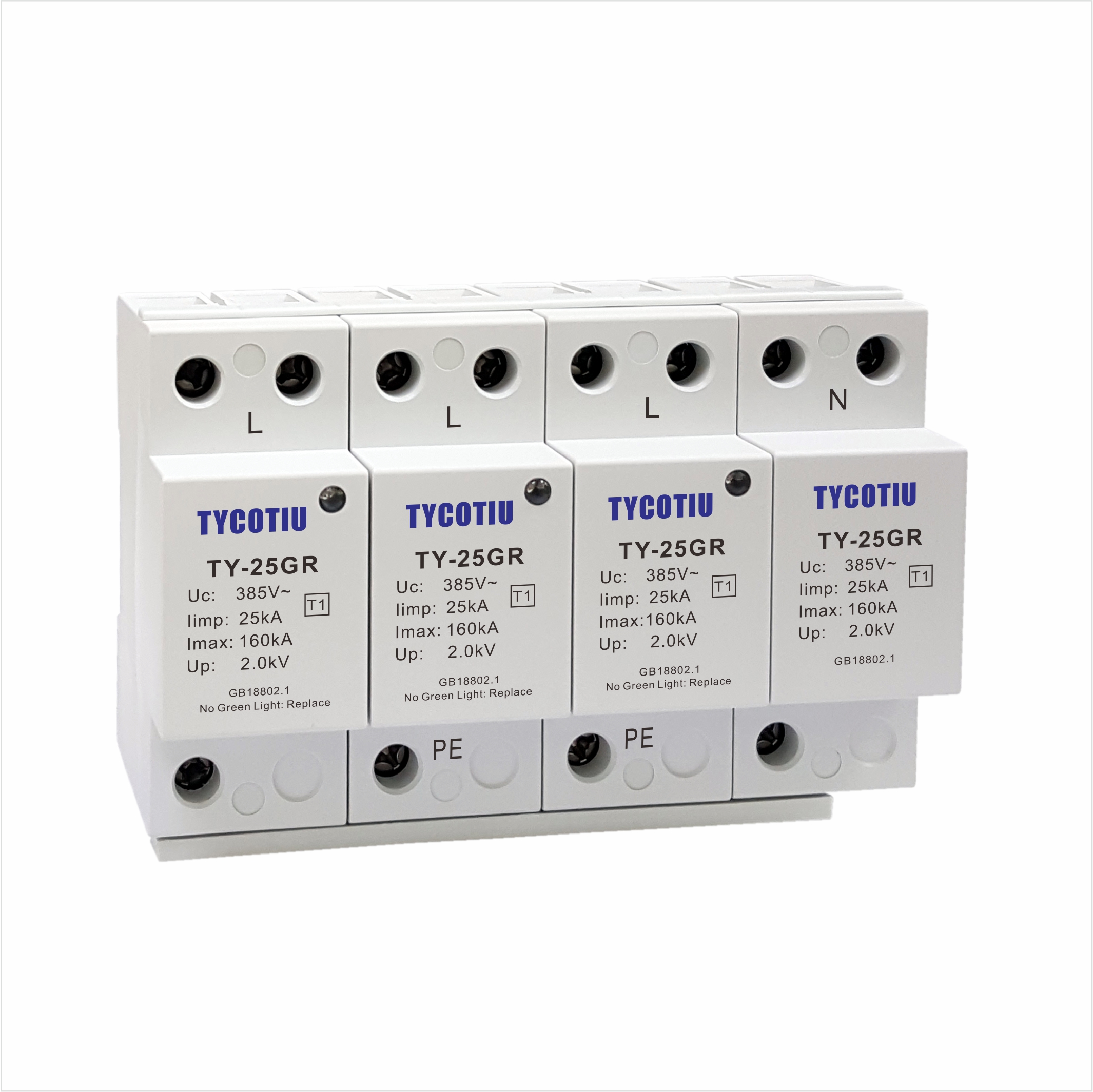
Recommended model: TY-25GR
Main parameters:
Brand: TYCOTIU
Maximum continuous operating voltage: 385V AC
Impulse current Iimp:25kA (10/350μs)
Nominal discharge current In:25kA (8/20μs)
Protection level: ≤2.0kV
Protection mode: 4P, 3P+NPE, 3P, 2P, 1P+NPE, 1P Optional
Response time: ≤100ns
Recommended backup protection fuse rated current: : 315A
Click to view detailed parameters: http://www.tycotiu.com/list-7.html
②, the second level of power protection:
The second level surge protector uses the product of T2 test (8/20μs test waveform) parameters.
We recommend the power distribution cabinet main switch 100A below 40kA series surge protector (Uc:385V, In:20kA, Imax:40kA, Up:1.8kV, 4P)
100A and above choose 80kA series surge protector (Uc:385V, In:40kA, Imax:80kA, Up:2.3kV, 4P)
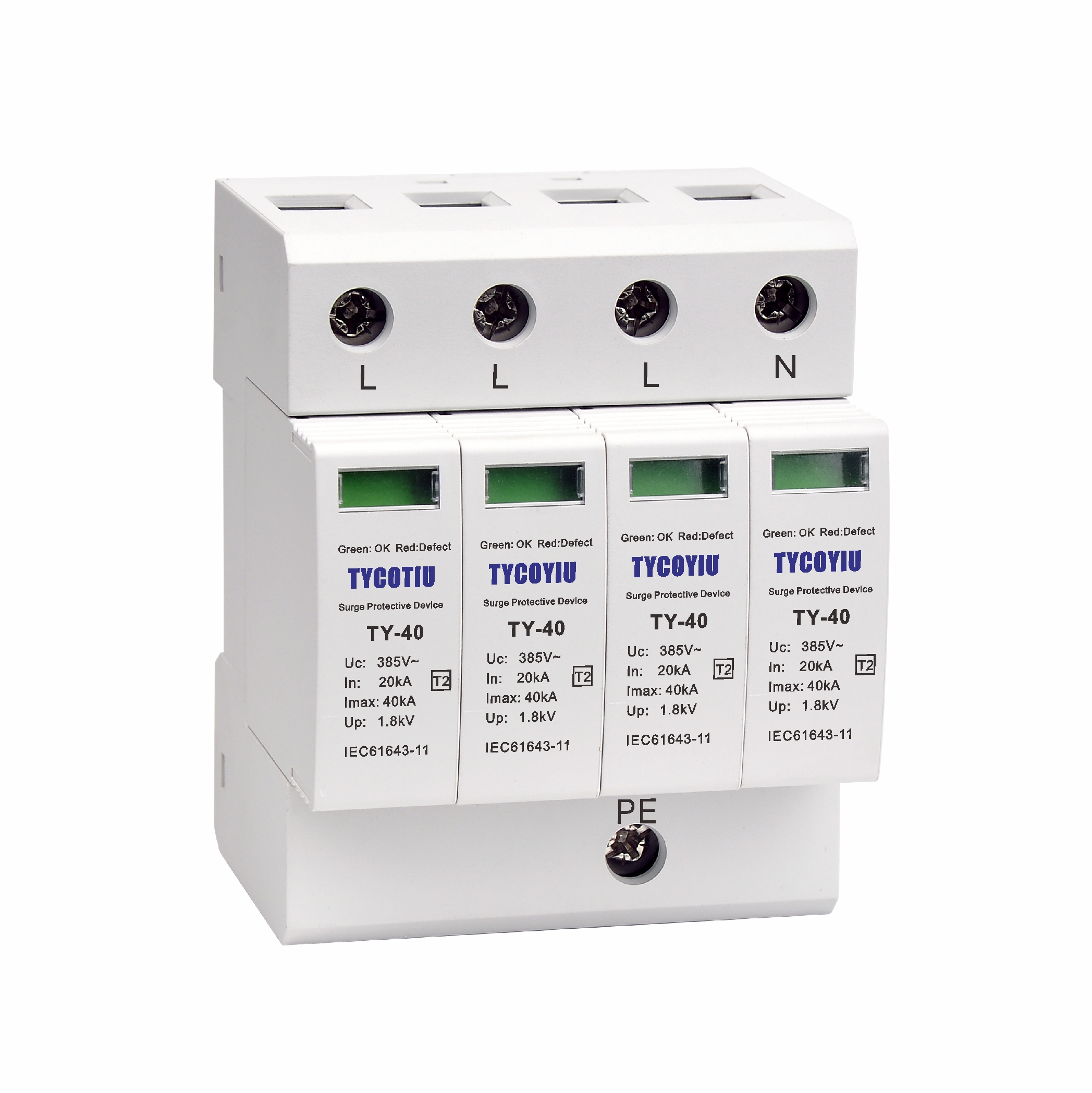
Recommended model: TY-40
Main parameters:
Brand: TYCOTIU
Maximum continuous operating voltage Uc: 385V AC
Nominal discharge current In: 20kA (8/20μs)
Max flow capacity Imax: 40kA (8/20μs)
Protection level Up: 1.8kV
Protection mode: 4P, 3P+NPE, 3P, 2P, 1P+NPE, 1P Optional
Response time: ≤25ns
Recommended backup protection switch rated current: 125A
Click to view detailed parameters: http://www.tycotiu.com/list-40.html
③, the third level of power protection:
The third level is generally a single-phase power surge protector, and the third level uses the products of T3 test parameters, the maximum flow capacity (Imax) is 20kA, the nominal flow capacity (In) is 10kA, the maximum continuous working voltage is 275VAC, and the protection level is Up:1.3kV.
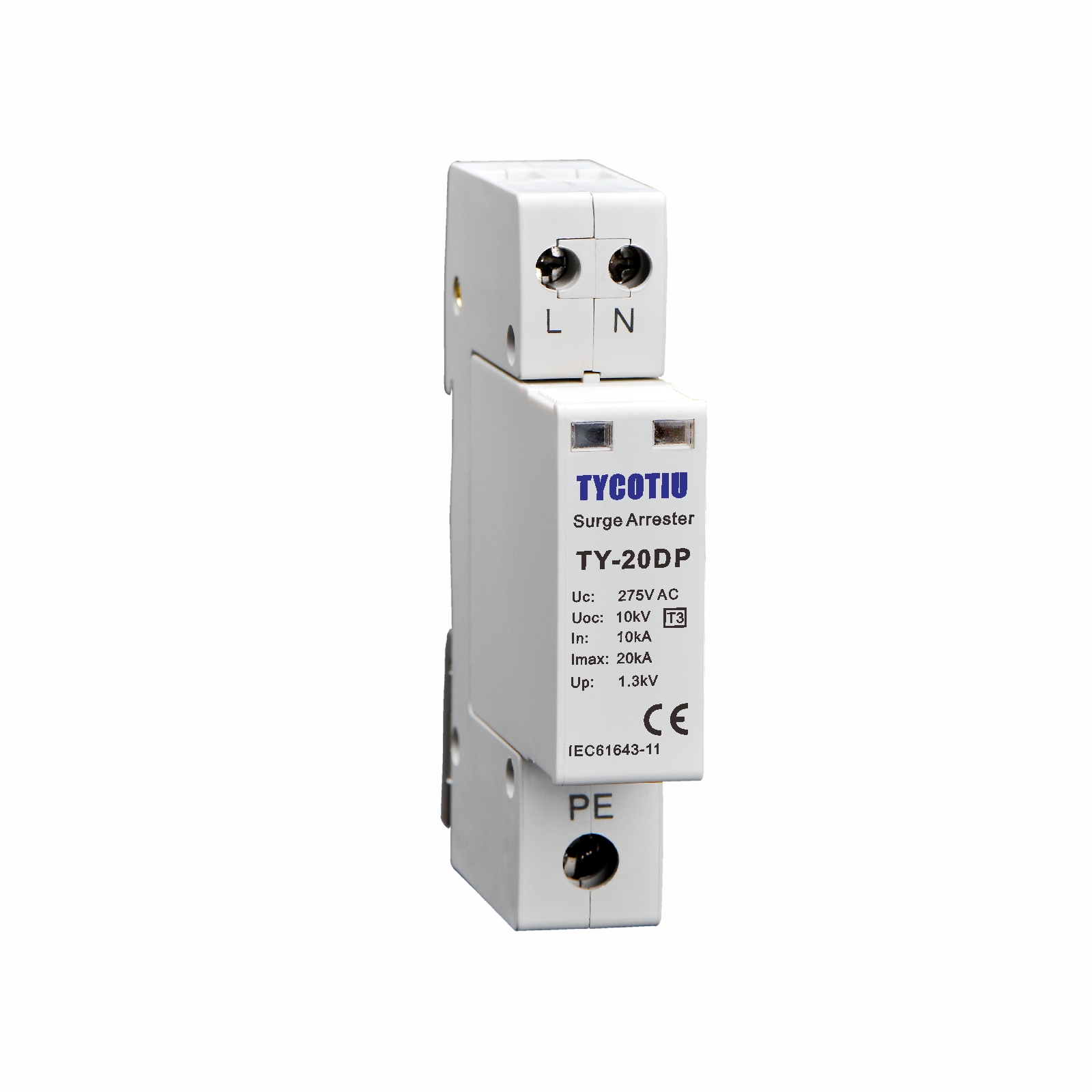
Recommended model: TY-20DP 2P
Main parameters:
Brand: TYCOTIU
Maximum continuous operating voltage Uc: 275V AC
Nominal discharge current In: 10kA (8/20μs)
Max flow capacity Imax: 20kA (8/20μs)
Protection level Up:1.3kV
Protection mode: 2P
Response time: ≤25ns
Click to view detailed parameters: http://www.tycotiu.com/list-41.html

